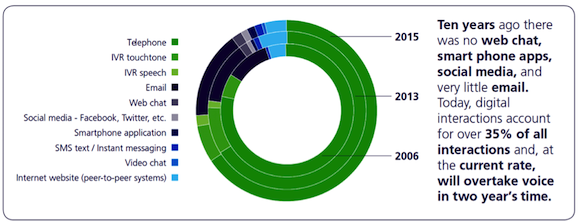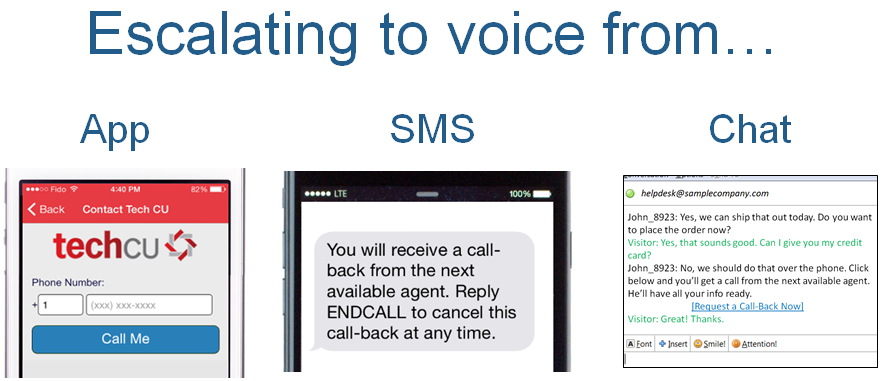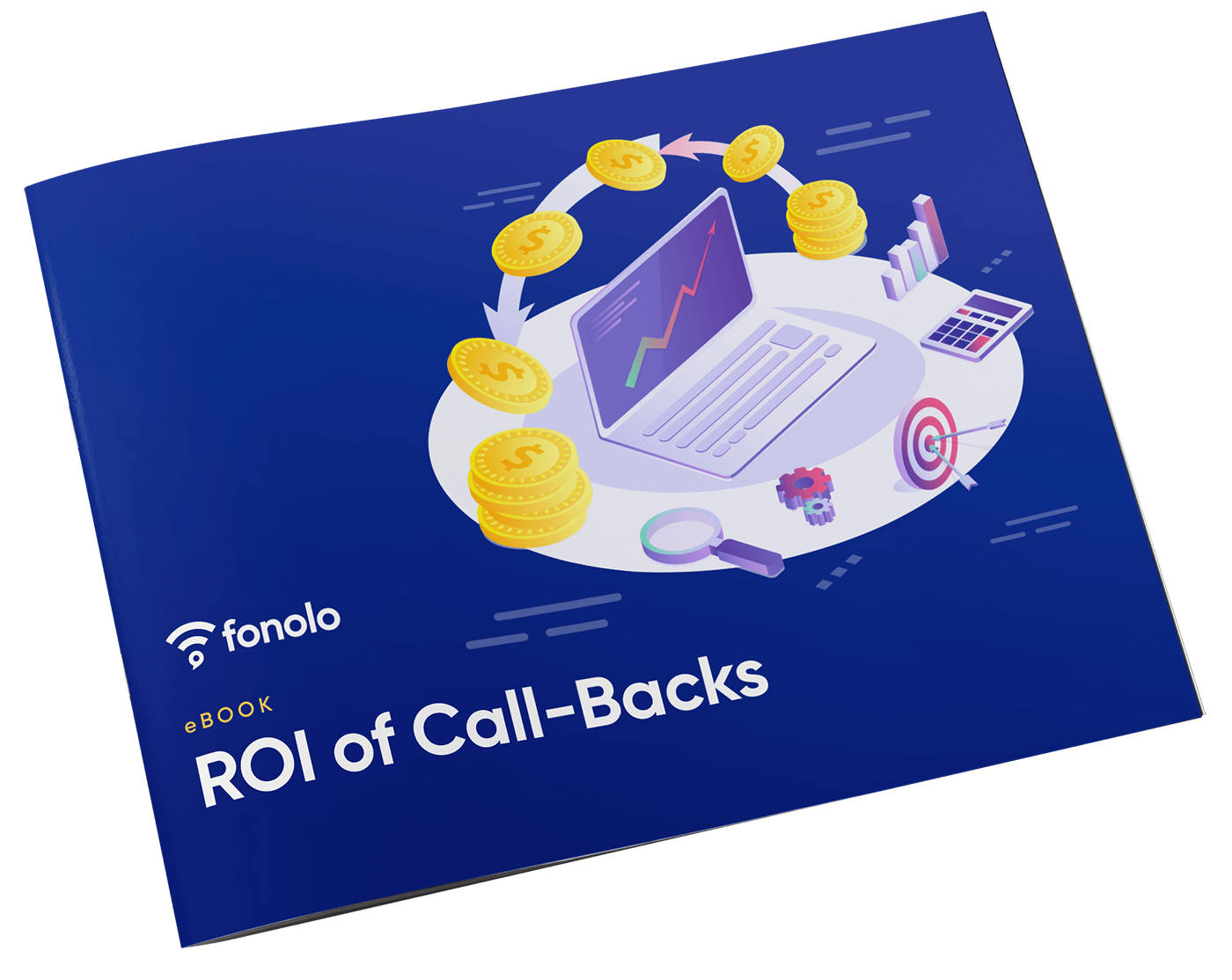 Is your contact center still forcing callers to wait on hold? If so, you are missing out on a great opportunity to increase customer satisfaction and reduce call center costs. Not surprisingly, 75% have said the option of a call-back highly appeals to them. If that’s not reason enough, how about some peer pressure?
Is your contact center still forcing callers to wait on hold? If so, you are missing out on a great opportunity to increase customer satisfaction and reduce call center costs. Not surprisingly, 75% have said the option of a call-back highly appeals to them. If that’s not reason enough, how about some peer pressure?
The Contact Center Decision Maker’s Guide is one of the most exhaustive studies of the industry and the 8th edition was recently released by our friends at ContactBabel. It has a terrific section on call-backs, and we’re very pleased to see that more and more call centers are adding call-back options.
Today’s consumers have very high expectations when it comes to customer service in general, and contact centers in particular. 76% say just ONE unpleasant contact center experience is enough to make them take their business elsewhere. The pressure is on.
How common is the call-back option?
ContactBabel surveyed 212 contact center managers about the technology they use. According to the report, 22% offer a call-back option for people that have dialed-in. (This type of call-back corresponds to Fonolo’s In-Call Rescue solution.)
It’s great to see this number growing, although it seems high based on our experience at Fonolo. That may be a result of how ContactBabel selected the 212 companies to include in its survey. In any case, growth in call-backs is welcomed!
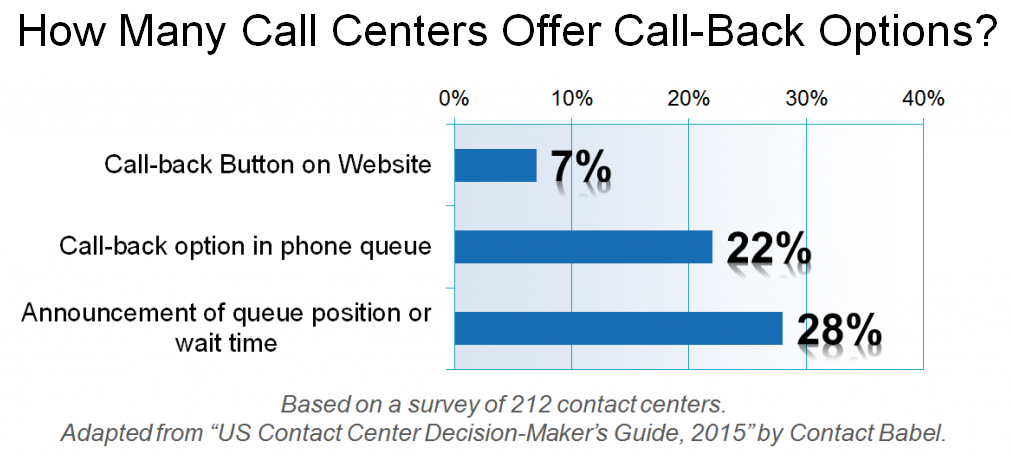
Web and mobile options
Although an in-queue offer for a call-back is great, the best time to offer a call-back is before the call is made. If callers can request a call-back by clicking on the company’s website or via the company’s mobile app, then they save the time of calling in, choosing the call-back option and hanging up. And at the same time, the company saves resources on unnecessary calls.
The survey showed only 7% for the web case – definitely room for growth there. The mobile case was not mentioned at all. It’s not clear if this is because the question was not asked or if no respondents answered in the positive. Either way, this is certainly going to change in the near future given the dominance of smartphones as the primary communication device for most young consumers.
Looking more broadly, it’s important to view web and mobile call-back scenarios in context of the changing channel choices. Salesforce Research surveyed more than 1900 call center leaders who expect inbound phone calls to decrease by 9% in the next 12 to 18 months. The chart below from Dimension Data’s highly regarded Global Contact Centre Benchmarking Report, illustrates this effect very clearly. (It is based on a survey of 900 call center managers.)
Ideally, companies should offer the ability to request a call-back from any other customer service channel.
What’s behind the growth in virtual queuing?
The concept of replacing hold-time with a call-back (aka “virtual queuing”) has been around for decades, but two changes in the industry have sparked renewed interest in recent years:
- Consumers have a lower tolerance for waiting on hold, and are vocal about their impatience on social media channels. This has put increased pressure on call centers to avoid public shame. See onholdwith.com for example.
- Adding call-backs used to require expensive, equipment-based solutions. Thus many call centers were priced-out or scared by the long deployment time. Today, call-backs are within reach of most companies either as part of their existing contact center platform or as a cloud-based service (like Fonolo) that works on top of legacy call center platforms.
What do people hate about waiting on hold?
There is a near universal dislike of talking to a call center. In a recent survey of 2000 Americans, aged 18 to 65, 80% said calling traditional customer service phone lines is “inconvenient”. For more on this see “5 Ways the Phone Call’s Role is Changing in Customer Service”.
In addition to surveying call center managers, this year ContactBabel also carried out a large-scale survey of the public. They asked people what things they find most annoying about waiting on hold.
As you can see, replacing hold-time with a call-back will eliminate most of these complaints.
Need more reasons to take a closer look at call-backs? Here are 5:
- Your customer satisfaction scores are sagging
- Your first call resolution (FCR) scores need improvement
- Customers are hammering you on social media
- Customers are using multiple channels to reach you
- You want to reduce abandonment rates
Our recent post “7 Signs Your Call Center Needs a Call-Back Solution” goes into each of these reasons and lists 2 more.
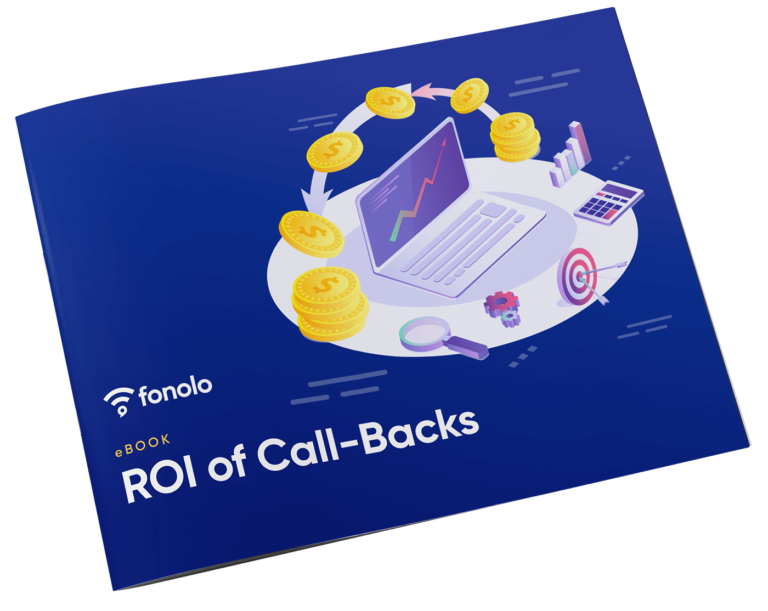
Find out the Real ROI of Call-Backs
Learn how you can build a business case for call-backs using this ROI eBook.
